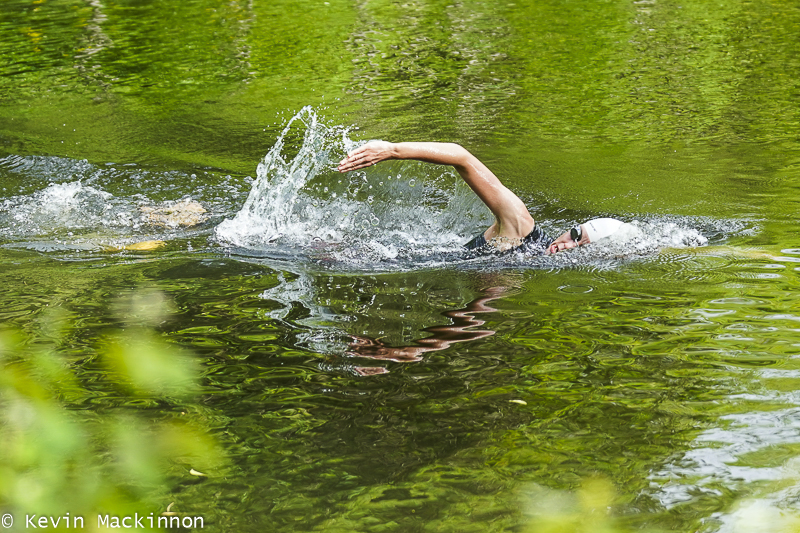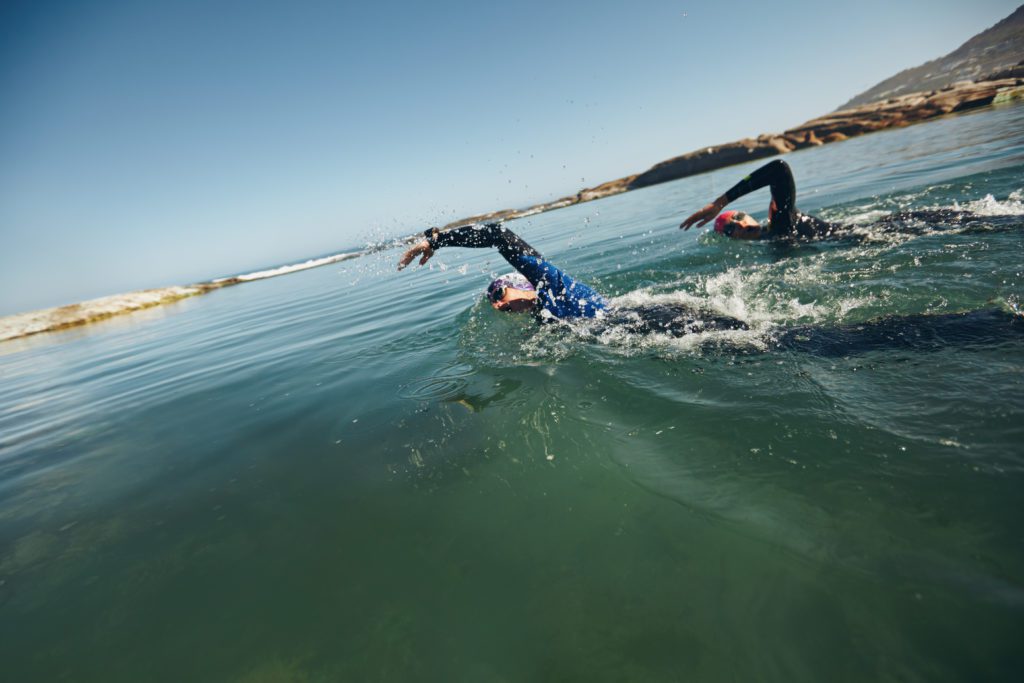Don’t just swim long – try these open water swim sets
Get the most out of your next open water swim workout
 Photo by:
Kevin Mackinnon
Photo by:
Kevin Mackinnon
For the second year in a row, Canadians are moving back to open water with heightened vigour. Pools might be opening, but access has been limited in many areas. With the warming of the lakes, though, there’s no reason you can’t get some good quality swim workouts done. Here are some good practices that will make the open-water swim experience more productive, enjoyable and safer.
Related: No pool? No problem – open water swim training
Too often I see folks get in the lake and only execute long aerobic efforts. There’s nothing wrong with long aerobic efforts, but they shouldn’t be the only thing you do. Get in some of the high-end work that will raise the ceiling of your fitness. Without the black line, walls and clocks you’re used to in a pool, it might feel challenging to construct a solid structured session, but with today’s tech it’s not a problem. Many folks are swimming with programmable watches – so program in a time-based session. If it’s not too loud around you won’t have any problems hearing the watch beep off the intervals – even with ear plugs in.
Keep it simple to start with. Something like:
- 10 min easy warm-up
- 4 x 3 minutes strong/1 minute easy
- 1 minute extra easy
- 4 x 2 minutes strong/1 minute easy
- 1 minute extra easy
- 4 x 1 minute strong/1 minute easy
- 1 minute extra easy
- 4 x 30 seconds strong/30 seconds easy
- 2 minutes easy
That’s a simple, 45-minute, session that will encourage some upper-level intensity within your session.
Training journal platforms like Training Peaks and Final Surge offer the ability to “build” a workout that can be uploaded to your watch. These workouts can even be built with distances instead of duration, but accuracy can be sketchy depending on where you are and the distances used (the shorter the distance the less accurate, I’ve found).
If you have the luxury of being able to swim with others then take advantage of that and work on your starts. Line up on the beach – and have someone yell “go.” Get used to the bumping and banging that happens in most starts.
Learn to sight and draft
Too often I see swimmers looking for “open water” when swimming with others, but it’s the same as biking with others. You shouldn’t be in any hurry to “get out of the wind.” So, get on feet and let the athlete in front do the sighting while you’re getting some free speed. If your hands are entering at their hips or just behind their feet – you’re in the right place. Also, like cycling, I like to work on pace lines if you can get three or four swimmers together. Swim in a line with each person taking 30 to 40 strokes at the front, then pulling off to let the line through.
Be safe
Obviously there are more safety issues involved in open water swimming versus a pool. If you have a problem, you can’t just grab a wall. This is why it’s never a great idea to do an open-water swim solo. If you must, get yourself one of those bright neon floaties. I tried one for the first time last year, and was pleasantly surprised at how little I noticed the thing being there. I had to look back several times at first to confirm that it was still following me. They also have the added benefit of offering a safe dry place to put your keys and phone. Something else you can put in there is a set of paddles or a band for some variety in your swim session.
I don’t know of many triathletes who don’t look forward to open water season, but living in pandemic times lends added enthusiasm to breaking out of the pool and heading for the wide-open spaces. Have a plan, work hard and stay safe out there.
Clint Lien is the head coach of Victoria’s Mercury Rising Triathlon www.mercuryrisingtriathlon.com and assistant coach at the Canadian National Performance Centre.

